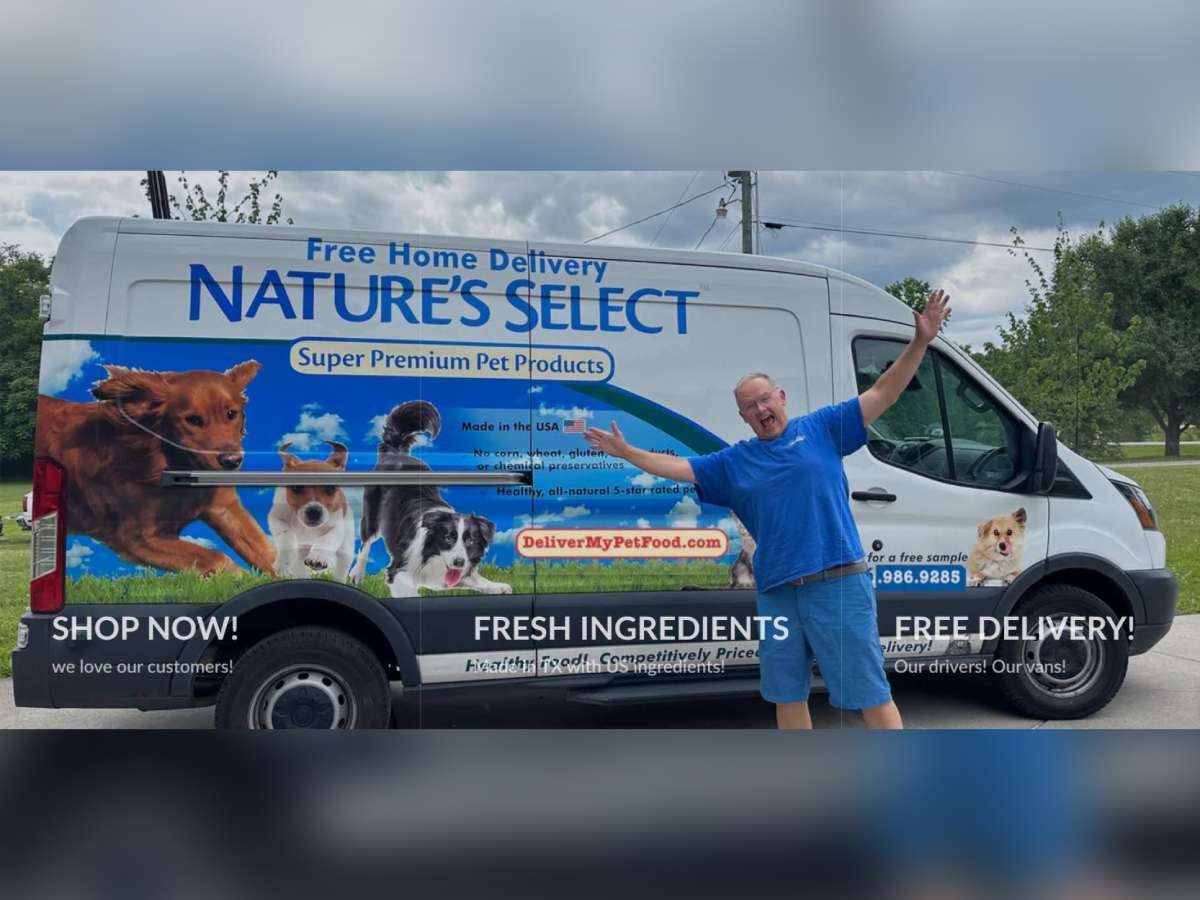Hypoallergenic Dogs List
Dogs make fantastic pets, but it can be hard to find the right dog for you if you happen to be allergic to most of them.
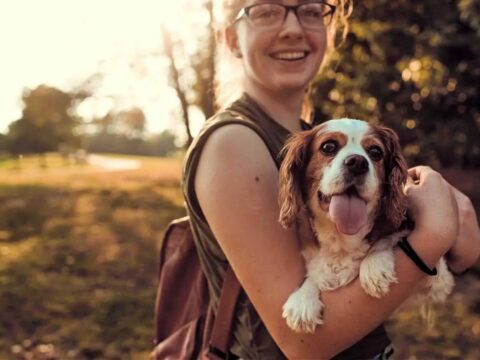
In the United States, as many as 3 in 10 individuals are allergic to dogs and cats.
Luckily, dog lovers who are allergic can still make wonderful pet parents to hypoallergenic dog breeds!
Hypoallergenic dog breeds are the best choice for pet lovers who are allergic — because they don’t shed as much fur and dander as non-hypoallergenic dogs do.
Dander is what causes the majority of pet allergies. It’s those tiny flecks of dead skin that is shed by any animal with fur or feathers — similar to dandruff in humans:
- On non-hypoallergenic dogs… the dander latches onto the fur and is released into the air whenever the fur is shed.
- On hypoallergenic dogs… the dander typically stays close to the root of the hair. So if the hair does fall out, the dander just gets tangled in with the other hair instead of becoming airborne.
Although no dog breed or individual dog is truly 100% hypoallergenic, most hypoallergenic dog breeds have a predictable non-shedding coat that makes it possible for you to enjoy their companionship even if you are allergic to pets.
Generally speaking:
- Short-haired dogs without an undercoat are the easiest to keep clean and are better tolerated by those with pet allergies.
- Smaller dogs are usually more tolerable than larger dogs — because they tend to shed less dander than larger dogs do.
- Dogs that don’t drool much are better suited to those with pet allergies — because allergens are naturally released in a dog’s saliva.
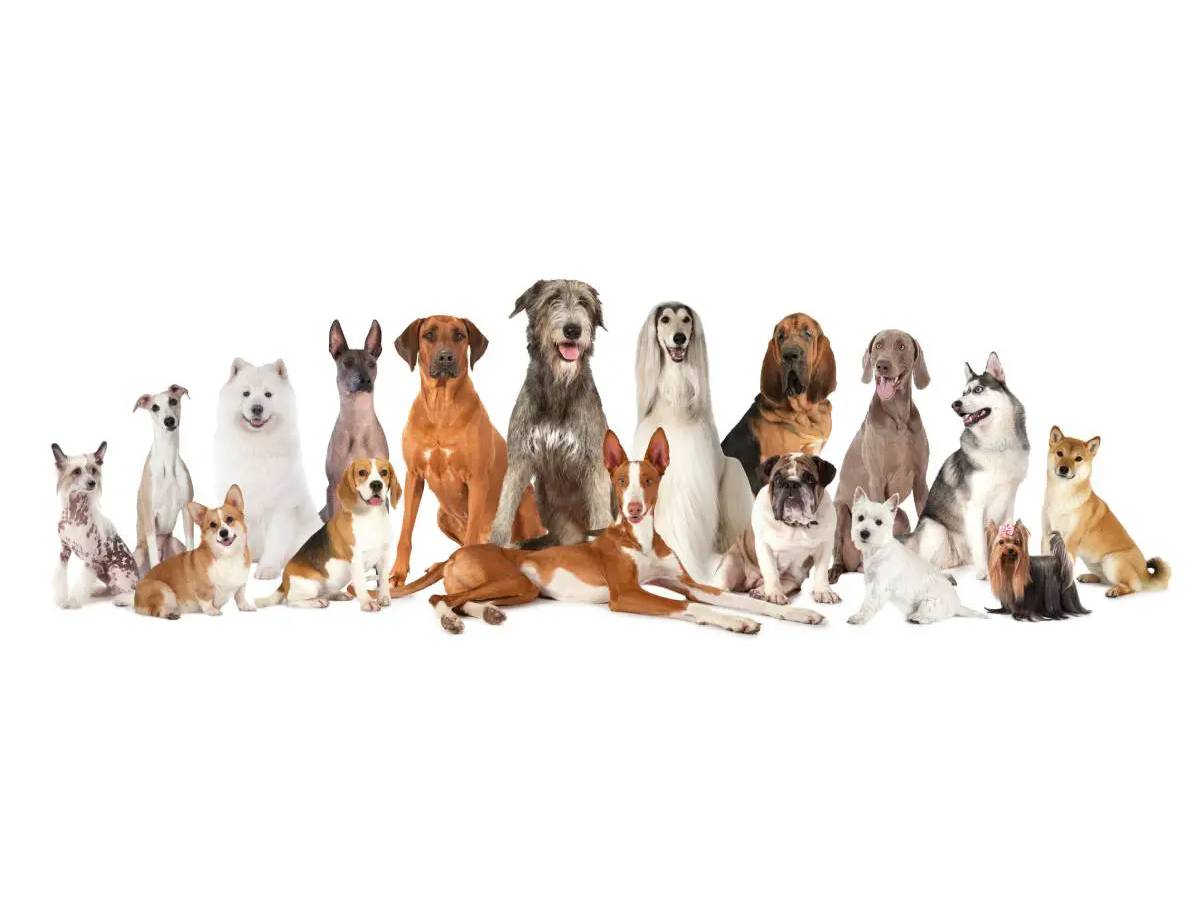
So, if you are an allergic dog lover wondering which is the best pup for you, check out this list of 19 top hypoallergenic dogs that would be a great choice for you!
The following 19 dog breeds are ranked from good, better, best — in terms of their likelihood of causing someone with pet allergies to have an allergic reaction.
Top 2 Low-Shedding Hypoallergenic Dogs
These dog breeds are considered hypoallergenic primarily because they are below-average shedders.
Out of all the dog breeds that exist, these are the ones that are less likely to shed their fur and dander than most — but there are others which shed even less.
So, on our Hypoallergenic Dogs List, these are good candidates for someone with mild pet allergies.
#1 – Kerry Blue Terrier (medium size, single-coated hair)
Unlike most dogs that shed daily, the single-coated Kerry Blue Terrier sheds every 3 weeks. This makes it a predictable pet — since you can easily control the amount of hair it sheds by regular grooming. Also, the curly coat of the medium-sized Kerry Blue Terrier retains much of the dander — which makes it easy to remove during the brushing process! (Daily brushing is recommended.) Bonus: these dogs have a low tendency to drool.
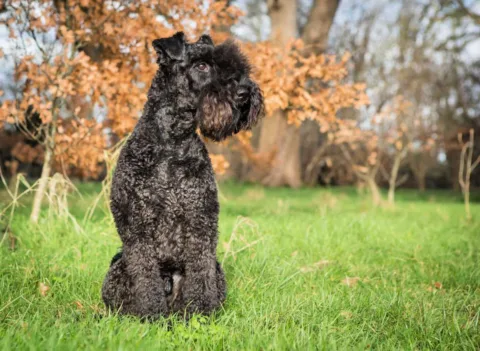
#2 – Samoyed (large size, doubled-coated fur)
At first, you may think that this large dog isn’t right for you due to its fluffy coat. But what makes Samoyeds great for people with pet allergies is their super thick undercoat, which prevents their dander from becoming airborne. Samoyeds do shed a lot though — so they require constant grooming. However, they don’t drool! So if you’re allergic to dog saliva, you won’t have to worry about that.
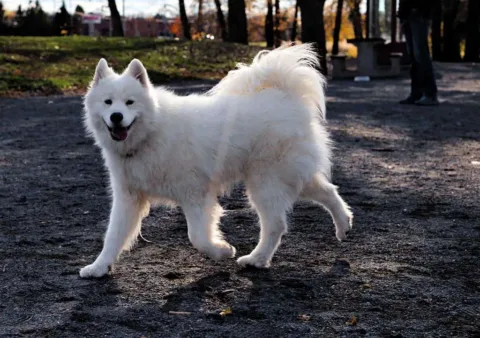
Top 10 Least-Shedding Hypoallergenic Dogs
The following 10 dog breeds are considered hypoallergenic due to the fact that they are even less likely to shed fur and dander… and they have a low tendency to drool. These unique qualities make them great candidates for people with pet allergies!
Most dogs have two layers of fur (the undercoat and the topcoat) which provide the dog with adequate insulation at various temperatures. Dog fur is usually somewhat thick — especially the undercoat. It’s this undercoat fur that sheds naturally all throughout the year, with or without proper grooming.
These dog breeds are not like that. These breeds shed less and are considered relatively low-maintenance hypoallergenic dogs.
#1 – Italian Greyhound (medium size, single-coated fur)
The Italian Greyhound is a medium-sized dog that has very little hair and requires very little grooming. This single-coated dog hardly sheds at all, and it also has minimal drool. Both of those traits make Italian Greyhounds one of the best choices for people with pet allergies. (They also don’t have an odor!) Keep in mind that Greyhounds are more suited for a warm climate, as their skin is very sensitive to chilly weather.
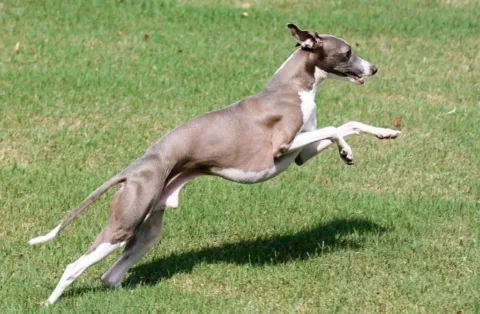
#2 – Peruvian Inca Orchid (medium size, single-coated hair)
The Peruvian Inca Orchid is another great dog breed for those with pet allergies — because it’s hairless and doesn’t require much grooming at all. And this is a low-drooling breed. However, these medium-sized dogs do need some extra attention when it comes to keeping their skin healthy. And since their skin is always exposed, extreme temperatures can seriously affect these dogs.
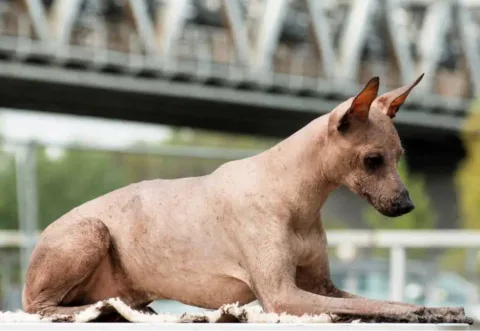
#3 – Bichon Frise (small size, double-coated hair)
Don’t be put off by this dog’s fluffy double coat. This small dog has hypoallergenic hair that is soft and velvety. The Bichon Frise’s hair is also tightly curled — which ensures that dander stays in the coat until grooming day. Bonus: these dogs have a very low drooling tendency!
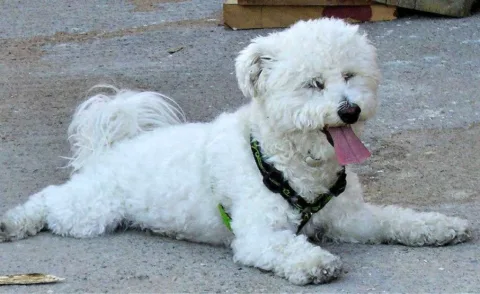
#4 – Havanese (small size, double-coated hair)
The Havanese’s double coat is similar to that of the Bichon Frise. The only difference is that a Bichon has curly hair — whereas the Havanese coat has soft wavy hair. This soft silky wave prevents the hair from falling everywhere (shedding). In addition, the small Havanese dog doesn’t drool much — which is another reason they are a great option for someone with pet allergies.

#5 – Poodle (large size, single-coated hair)
Fluffy and curly are the words many people use to describe this perfect looking pup. Large-sized Poodles are perfect for people with pet allergies — since their dense curly hair is single-coated and sheds only minimally. Instead of the dander coming off the dog and being airborne, it becomes tangled in the dog’s surrounding hair. (The same is true for their relative, the Labradoodle.) Poodles are among the least likely to drool. Plus, since a Poodle’s face is often neatly trimmed, they’re also unlikely to make a mess while drinking water!

#6 – Cairn Terrier (small size, double-coated fur)
Although they have two coats of fur (a shaggy topcoat and a soft downy undercoat), these small dogs shed very little and produce little to no dander. In fact, they’re very low maintenance. Aside from the occasional brushing, they require very little grooming. And they don’t drool very often. (Remember Toto from The Wizard of Oz?… That was a Cairn Terrier dog.)

#7 – Basenji (medium size, single-coated hair)
You’ll love the medium-sized Basenji dog because of their self-grooming skills! Besides, this breed doesn’t shed its single-coated hair and has minimal dander, which is great for someone with pet allergies. They also don’t bark, so there’s less spit and slobber — which means there’s less of a chance of having an allergic reaction.
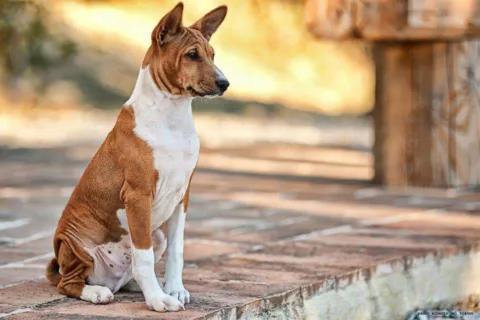
#8 – Irish Water Spaniel (large size, double-coated hair)
You will recognize the large Irish Water Spaniel by its tight curled hair, naked tail, and a mop-like head. Although double-coated, their water-repellent hair doesn’t shed much, making this pooch a great companion for pet allergic individuals. However, their coat is unique in that it attracts dirt and debris — so it must be brushed regularly to keep it clean and prevent matting. These dogs don’t drool.
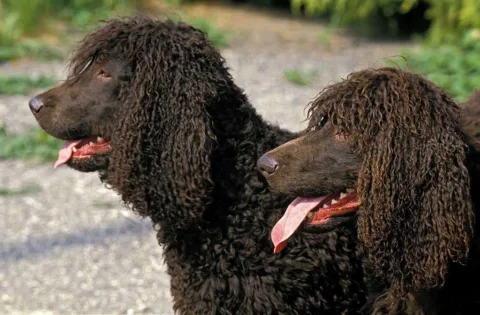
#9 – Chinese Crested (small size, single-coated hair)
These adorable pups have an almost hairless body — so they don’t shed much, but they do shed a little. Other bonuses: you don’t have to groom a Chinese Crested very often, they don’t drool, and they don’t have a body odor! This single-coated small dog thrives on human companionship.
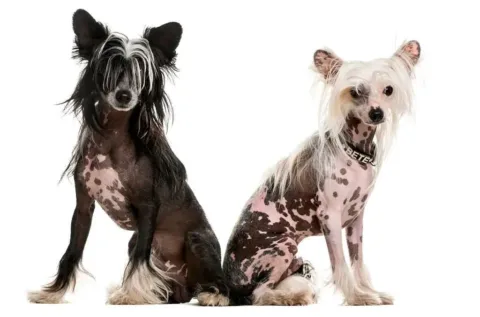
#10 – Schnauzer (medium size, double-coated hair)
Although this medium-sized dog does have an undercoat and they do shed a little, they don’t shed their hair in large clumps like most other dogs with fur do. This makes it easier for you to control the amount of dander and hair shedding through regular grooming. And since the Schnauzer’s outer wiry coat is relatively sparse, the shedding is less noticeable. Bonus: their wiry hair also prevents dirt and debris from sticking to their coat, they don’t require much grooming, and they don’t drool!
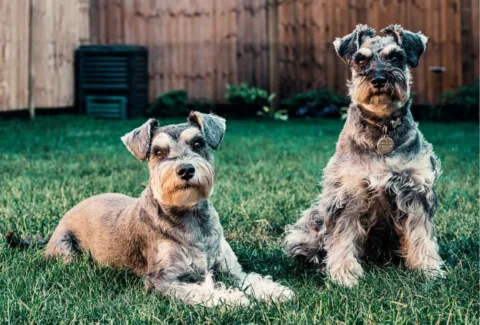
Top 7 Non-Shedding Hypoallergenic Dogs
Following are the 7 top hypoallergenic dogs that are least likely to cause pet allergy sufferers to have an allergic reaction. The primary reason for that is the fact that these dogs have human-like hair, rather than dog-like hair (or fur).
Dog hair is very different from dog fur in its texture and the fact that it grows continuously until it is cut off — like human hair does. Individual dog hairs are also thicker than individual strands of dog fur. Since dogs with hair don’t shed seasonally like dogs with fur do, they produce far fewer allergens than most dog breeds!
Even if you tend to have mild allergic reactions to most pets, chances are you will not have an allergic reaction to these dogs. Therefore, they are the best choice for people with pet allergies. (While these dog breeds have great hair and don’t drool, they will most likely require a bit of grooming to keep their long hair smooth, silky, and tangle free.)
#1 – Shih Tzu (small size, double-coated hair)
Although the Shih Tzu has two coats of hair (undercoat and topcoat), their hair is more human-like than dog-like — which makes it almost impossible for Shih Tzu hair to cause an allergic reaction. Pretty much the only time this small dog sheds is when they are bathed or brushed. While they aren’t likely to drool, you will need to groom your Shih Tzu regularly to keep their coat clean and tangle-free.
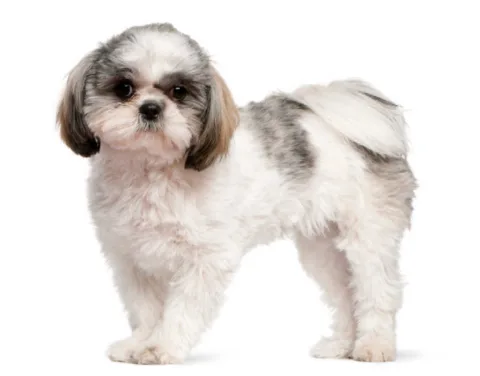
#2 – Yorkshire Terrier (small size, single-coated hair)
A Yorkshire Terrier is also a good choice for pet allergy sufferers — because they have human-like hair. And since Yorkies don’t have an undercoat, you only need to keep them well-trimmed so their hair doesn’t get matted. This is a great choice if you like small dogs that don’t drool!
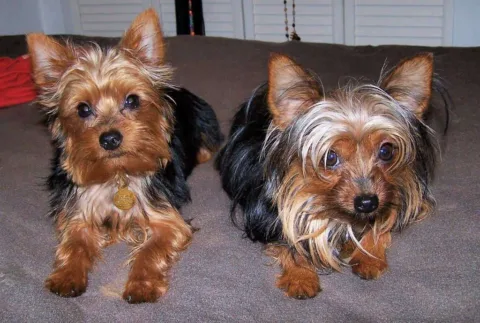
#3 – Maltese (small size, single-coated hair)
The Maltese is a small dog with long silky hair that doesn’t shed, and no undercoat. This means very little dander — which makes them popular with those who are allergic to pets. In addition, this dog breed has a low tendency to drool. And since both Poodles and Maltese are considered non-shedders, Maltipoos are also considered hypoallergenic dogs that don’t shed!
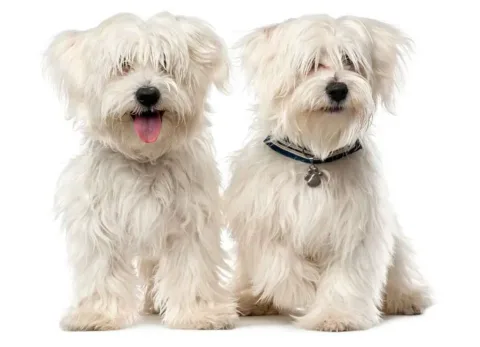
#4 – Bedlington Terrier (medium size, single-coated hair)
This gentle dog has a curly woolly lamb-like coat. Just like their relative, the Airedale Terrier, the tight curly hair of the Bedlington doesn’t shed — so the dander stays put in the dog’s single coat, keeping allergic reactions to a minimum. And they aren’t likely to drool. This is a good choice for pet allergy sufferers who want a medium-sized dog.
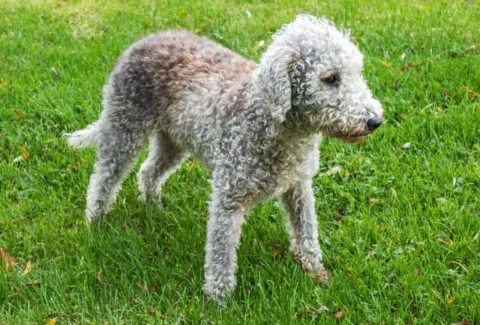
#5 – Afghan Hound (large size, single-coated hair)
This large hypoallergenic dog breed is distinguished by its long silky mane. Don’t let the fluffy coat of this hound scare you, as it doesn’t shed, and there is no undercoat. But you’ll need to stock up plenty of grooming supplies to keep their hair looking good! This dog breed doesn’t drool much, if at all.
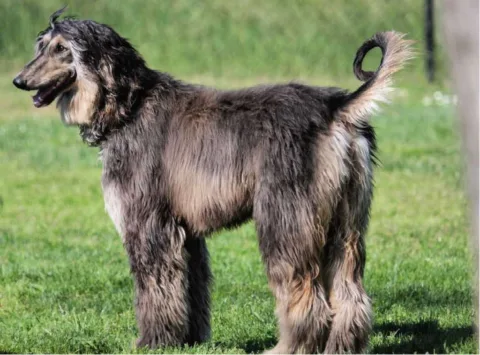
#6 – Portuguese Water Dog (large size, single-coated hair)
This non-drooling pooch is an excellent choice for anyone with pet allergies seeking a large-sized dog. Since they have hair that is more like a human’s and no undercoat, these dogs do not shed. All you need to do is keep them well-trimmed, because their hair does grow fast. And be sure that you keep your Portuguese Water Dog fully exercised — because this is an athletic dog breed with a lot of energy!
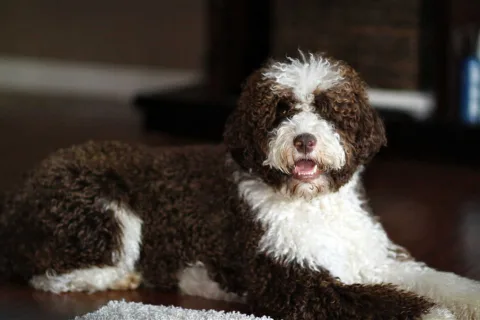
#7 – Coton de Tulear (small size, single-coated hair)
This hardy small dog is a wonderful companion to anyone with pet allergies. This is a loyal pet that gets along well with kids. Even better… since they have hair (rather than fur) and no undercoat, they don’t shed. They also don’t drool and have hardly any odor at all! Daily brushing is required to detangle the Coton de Tulear’s hair though.
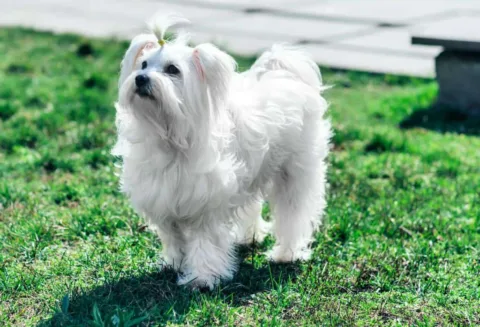
The Bottom Line
It’s the dander (dead skin) a dog naturally sheds that is most likely to cause your allergic reaction to dogs. Since low-shedding dogs (especially hairless dogs and dogs without an undercoat) don’t shed much dander, these dogs don’t create an allergic reaction for most people.
All dog breeds produce allergens in their saliva as well — but to a lesser extent than their dander. So if you’re allergic to dog saliva, this hypoallergenic dogs list will be very helpful. Most of these dogs don’t drool!
Finally, there are several long hair dog breeds with fur that is more like human hair than traditional dog fur — and many of those breeds do not create an allergic reaction for most people either. (You still have to groom them often though — to prevent their hair from becoming matted.)
So, if you know that you’re allergic to dogs but would love a four-legged friend of your own, our advice is to start with one of the hypoallergenic dog breeds listed above. From there, the more that you strive to reduce your dog’s shedding, the less likely you will be to have an allergic reaction to your pet.
TIP: Adding a little bit of olive oil to your dog’s food and brushing your dog’s coat regularly can help to reduce shedding. (Olive oil also helps with a dog’s dry skin!)
READ NEXT: Dog Breeds That Don’t Bark A Lot
Like this post? Save it to read again later… or share with others on Pinterest!
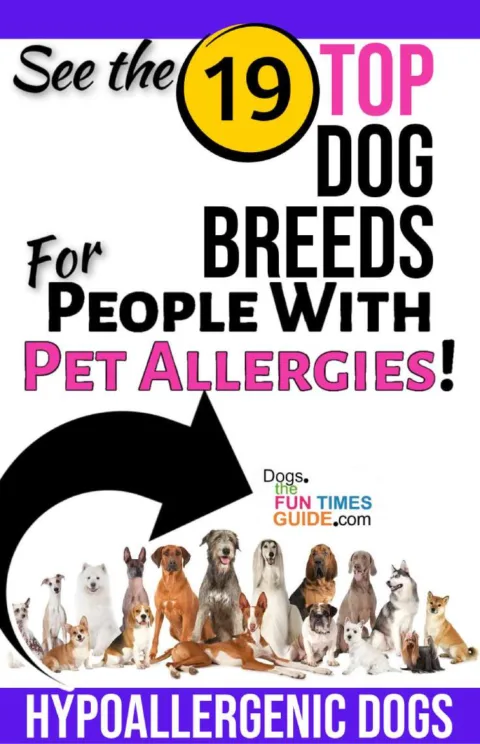
Lauretta Williams is a co-founder at PawMaw.com, a website dedicated to reuniting people with their lost pets. In her free time, she enjoys sharing helpful tips for caring for dogs.



